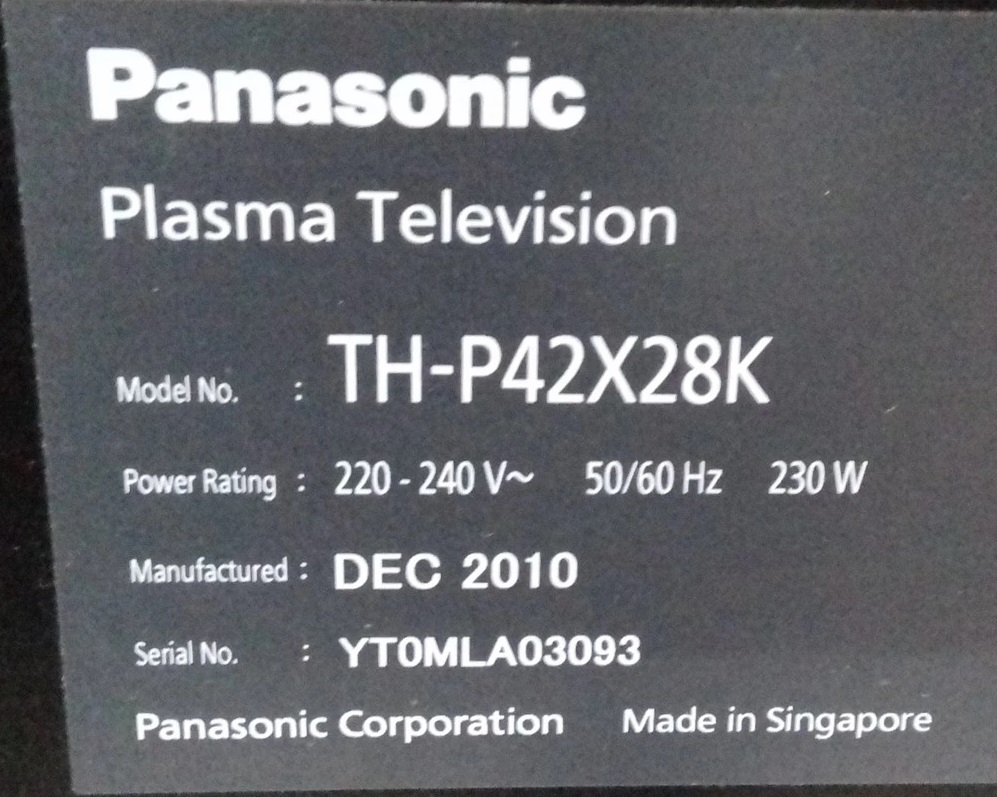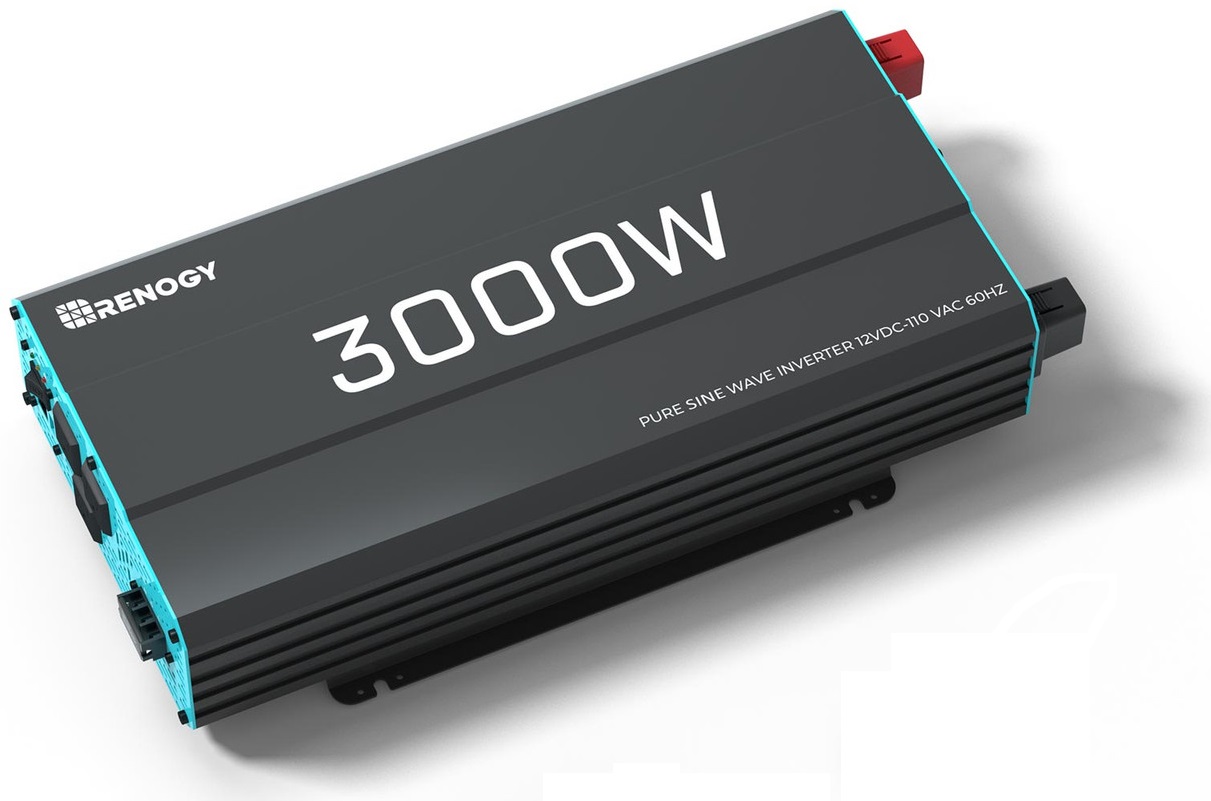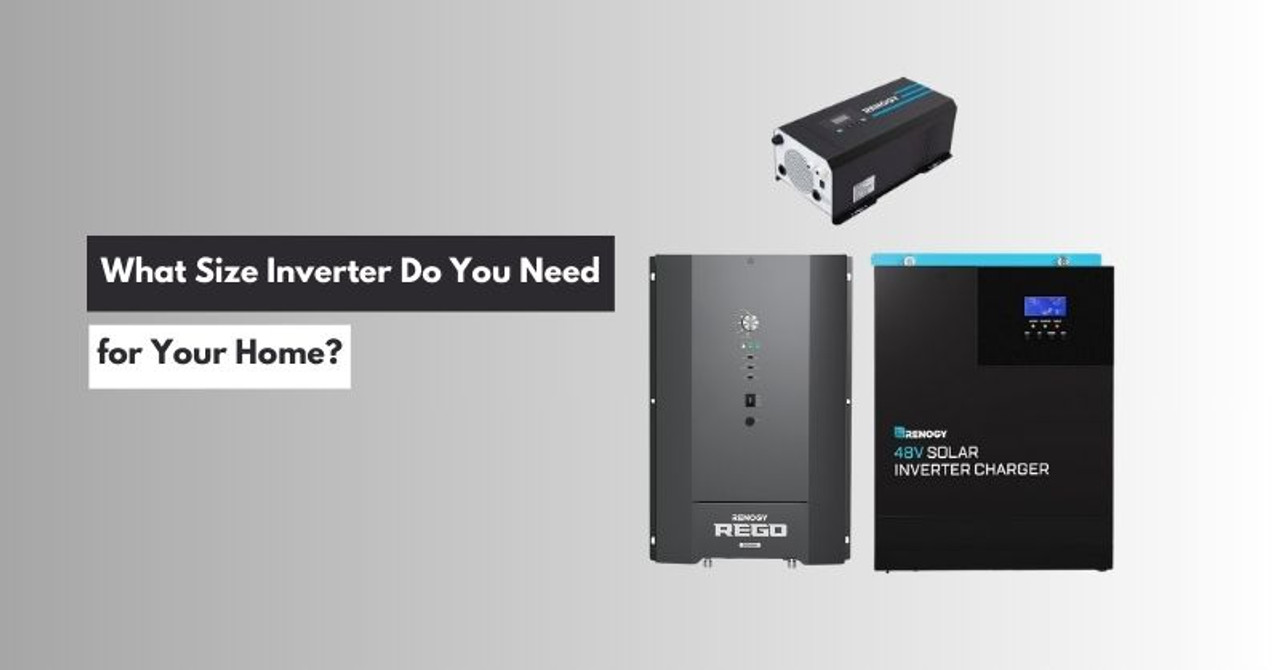What Size Inverter Do You Need for Your Home?
As you know, nowadays, batteries have become an essential part of our daily lives, as they store energy and provide it during outages, at night, or in remote areas where there is no grid supply. Remember, the batteries can only store DC energy, which can't power up our house or other appliances we usually use, like mobile devices, fans, refrigerators, and more. This is where the concept of power inverter arises.
An inverter is a dedicated device designed to convert DC energy into AC power. This AC power is then supplied to run most of our home appliances. The demand for home-based backup power solutions is increasing every other day. The reason behind this fact is the rising popularity of solar energy, remote living, and the increasing number of power outages in the US and around the world.
Different inverter sizes are available in the market. Don't buy one until you know the right size. To know more about how to find and select the right size power inverter for home, read this article carefully, as it covers everything you need to know about this subject.
How to calculate the total wattage of devices in your home?
The inverter size depends on the number of appliances or gadgets you want to run with it during outages or outdoor activities. If you want to power up more appliances, you will need a bigger inverter.
To calculate or determine what size inverter can meet your energy requirements, you need to calculate the total power of all the appliances you want to run with the inverter. Here is how you can do it.
Step 1: Identify all electrical appliances you want to run with an inverter and list them all.
Step 2: Look at the power consumption of all appliances and add them to get the total wattage. You can see the power consumption of different appliances (as shown in the image below) on their nameplates or user manuals provided by the manufacturer.
If you can't see the power rating on the nameplate, you can simply multiply the current and voltage ratings of that particular device to calculate its power.

Note: Remember, the power of appliances with motors (like fans, refrigerators, air conditioners, and water pumps) is divided into two categories: starting wattage and running wattage. The starting wattage is the power consumed by any appliance while starting, whereas the running wattage is the power consumed continuously during routine operations. The starting wattage is usually three times greater than the running wattage.
Step 3: Once you know the power of each appliance, multiply the calculated power by the number of hours for which you want to run an appliance. It will give you the daily Wh (watt-hour) consumption of each appliance.
Step 4: Note the peak starting wattage of motor-powered devices, such as refrigerators and pumps. It is crucial to consider this power to calculate the right size of power inverter.
Step 5: Once you calculate the total power of all appliances and the peak power of motor-based appliances, don't forget to add a margin of 20% to 25% power to the final answer. Doing this makes sure that the inverter can manage unplanned power needs or unexpected surges.
Selecting the right type and number of batteries for your power needs
Now that you know the total power you need to run the whole house or the preferred devices. It is time to determine the number and type of batteries to support the inverter and run the desired appliances. The battery capacity refers to the amount of electric charge a battery can provide in one hour. Simply put, the amount of energy a battery can store is known as its capacity. The capacity is mostly measured in Ah (amp-hours).
It is important to consider the capacity of batteries coupled with the inverter to determine how much power they can provide when the solar input is not available or during power outages. The battery terminals are connected to the inverter's input to convert the stored DC energy into AC power, which is then used to power up your home appliances.
Different battery types are available in today's market. Two of them are used commonly for residential purposes: lead-acid and lithium-ion. A lithium-ion battery comes with a compact size, higher efficiency, and an extended lifespan compared to a lead-acid battery. In addition, lithium-ion batteries are lighter than lead-acid ones. On the other hand, lead-acid batteries are more affordable than lithium-ion batteries. Therefore, the choice may vary from one person to another, depending on the available budget and specific energy requirements.
You can calculate the battery capacity by dividing the total daily energy consumption in watt-hour by the battery voltage (48V, 24V, or 12V). The final answer will be in amp-hours. Suppose you have a 24V battery and you consume 3000 watt-hours daily. In that case, use the formula below to find amp-hours.
battery capacity (Ah) = power consumption (Wh) / battery voltage (V)
battery capacity = 3000 / 24 = 125Ah
Let's now learn to calculate the runtime of an inverter based on the battery capacity calculated above. You can simply divide the battery capacity by the power consumption of a device you want to run with the inverter. If your device takes 2A of power, the inverter runtime can be calculated as follows.
run time (h) = battery capacity (Ah) / device's power consumption (A)
run time= 125 / 2 = 62.5 hours
Power inverter for home requires deep cycle batteries to deliver continuous power. These batteries can discharge at least 50% of the rated capacity. Some advanced deep cycle batteries can discharge more than 70% of the rated capacity.
If solar panels are integrated with advanced inverters and batteries, they can operate the whole house without the power supply coming from the grid. Therefore, they become the perfect source of backup power in remote areas and during outages.
What size inverter will you need for your home?
Selecting the right inverter size is important to ensure it can meet your home energy requirements effectively. The size or capacity of a power inverter for home depends on factors like total power consumption of the load and an additional buffer (10-25%) - it handles potential future expansion, peak loads, and unexpected surge power. We have discussed it in the previous section.
Inverters are available in different sizes to power home appliances. Considering your energy requirements, you can buy and install 1000W, 2000W, 3000W, 5000W, or even bigger inverters.
When choosing the size of the inverter, you need to consider several things, including the continuous power or running wattage of all appliances and surge capacity or the highest starting wattage to determine how much peak and continuous power an inverter should supply.
The efficiency of an inverter may vary depending on the DC input voltage and power. No inverter can achieve 100% efficiency while converting DC energy into AC power. It means that the output power is always less than the inverter's input power. Generally, the efficiency of inverters lies between 95% and 98%. Advanced inverters can even have over 98% efficiency.
The inverter's efficiency may vary depending on the load connected. You can achieve the highest efficiency at about two-thirds of the total capacity of an inverter. It is known as peak efficiency. Some power is required to run an inverter. Therefore, if a large inverter is connected to a very small load, its efficiency will be low.
The inverter size directly impacts its efficiency. Undersizing may optimize the inverter to operate in specific conditions, whereas oversizing may help you with future expansion.
How to choose the right power inverter for your home?
When choosing an inverter for a house, you should consider its size, type, and potential features. Two major types of inverters exist in the market: modified sine wave and pure sine wave. Pure sine wave inverters are expensive but they can deliver a reliable and consistent power supply to AC appliances, thereby maintaining their safety.
Though many devices, like laptops, mobile phones, and medical equipment, can run with a modified sine wave inverter, they might be running hotter than normal. This excessive heat can negatively impact the overall performance and lifetime of the connected devices. Moreover, when you power AC devices with a modified sine wave inverter, it produces a humming or buzzy noise.
Nowadays, many inverters are introduced with advanced features for enhanced safety and better monitoring. These features include overload protection, remote control, LCD display, and the list goes on. You can consider these features when buying a power inverter for home. Moreover, don't forget to consider brand reliability, price, and warranty. It is recommended to choose an inverter with an efficiency of at least 95%.
An inverter coupled with a battery pack can serve as a backup power source for homes with solar systems, RV homes, or areas where there is a limited or no power supply from the grid. The inverter is also perfect for homes that experience frequent power outages.
Best power inverter for home use
Are you looking for top-performing home inverters at competitive prices? We have shortlisted and presented below the highly recommended Renogy inverters for home use. Let's look at what makes them stand out.
1. Renogy 3000W Pure Sine Wave Inverter
If you need an ideal home inverter for moderate power requirements, look no further than a Renogy 12V 3000W Pure Sine Wave Inverter. It helps you seamlessly run lights, small electronics, and other home appliances. It comes with over 90% efficiency and can bear a peak surge of up to 6000W.

2. Renogy 3500W Pure Sine Wave Inverter
If you are looking for a reliable source to deliver consistent backup power for homes with higher power demands, try the Renogy 48V 3500W Pure Sine Wave Inverter. It is ideal for running larger appliances, such as air conditioners or refrigerators. You can monitor the inverter's data via an app. It can bear a peak surge of up to 7000W.
- Output 3500W continuous and 7000W surge power.
- Suitable for all types of 48V batteries.
- Uninterruptible power supply if other charging ways failure.
3. Renogy Inverter Charger
Do you need a dependable backup power solution for homes with both grid-tied or off-grid solar systems? Renogy Inverter Charger will be your go-to partner. It is highly compatible with almost all battery types, such as lithium, FLD, Gel, CAL, AGM, and more. This inverter charger comes with Bluetooth connectivity and offers enhanced protection for the batteries.
- Conversion efficiency greater than 90%.
- Compatible with Gel, AGM, SLA, FLD, CAL, and Li batteries.
- 4-stage charging ensures high efficiency and stability.
Final words
Choosing the right size power inverter is crucial to make sure that your home backup power system is reliable and efficient enough to meet your energy requirements with an uninterrupted power supply.
To find the best inverter for the house, remember to calculate the total power of appliances (see nameplates or manufacturer's specifications) you want to run with the inverter, the efficiency and power consumption of the inverter itself, and 10-25% extra margin to incorporate future expansion or peak surge.
If you are still unsure whether you can choose the right power inverter for home to meet all of your energy needs, it is better to consult a professional to get valuable and worthy assistance.
Frequently asked questions
What size inverter is needed to run a whole house?
Though it largely depends on your house's size and the number of appliances you want to run with the inverter, a 3000W to 5000W inverter is enough to power most appliances of an average household.
How long can an inverter power my home?
Well, the inverter's runtime depends on various factors, including the power consumption of the load connected, battery capacity, and the power consumption of the inverter itself. However, you can expect that an average inverter-battery setup can power your house for anywhere between 5 and 10 hours.
What is the ideal inverter capacity for home?
If you live in a small apartment, a 250 VA inverter coupled with a 100 Ah battery will be a perfect choice to power all basic appliances, including television, lights, and fans. In comparison, a 500 VA inverter with a 150 Ah or 200 Ah battery will be an ideal choice to run appliances (multiple fans, refrigerator, and more) in a medium-sized house.










